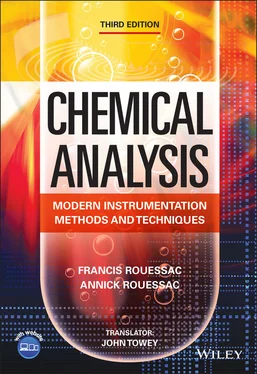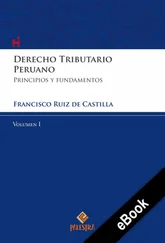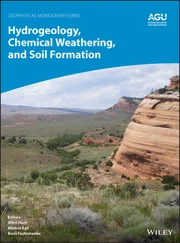Library of Congress Cataloging‐in‐Publication Data
Names: Rouessac, Francis, author. | Rouessac, Annick, author.
Title: Chemical analysis : modern instrumentation methods and techniques / Francis Rouessac, University of Le Mans, France, Annick Rouessac, University of Le Mans, France ; translator, John Towey, Vista Translations LLC, Portland, OR.
Other titles: Analyse chimique. English
Description: Third edition. | Hoboken, NJ : Wiley, 2022. | Originally published in France as Analyse chimique. Me´thodes et techniques instrumentales by Francis Rouessac and Annick Rouessac with the collaboration of Daniel Cruche & Arnaud Martel, © Dunod Editeur, 2019 for the 9th edition, Malakoff. | Includes bibliographical references.
Identifiers: LCCN 2021049314 (print) | LCCN 2021049315 (ebook) | ISBN 9781119701330 (paperback) | ISBN 9781119701354 (adobe pdf) | ISBN 9781119701347 (epub)
Subjects: LCSH: Instrumental analysis.
Classification: LCC QD79.I5 R6813 2022 (print) | LCC QD79.I5 (ebook) | DDC 543–dc23/eng/20211007
LC record available at https://lccn.loc.gov/2021049314LC ebook record available at https://lccn.loc.gov/2021049315
Cover Design: Wiley
Cover Image: © SEAN GLADWELL/Moment/Getty Images
This book is intended to provide basic knowledge regarding the most common methods encountered in qualitative, quantitative, and structural chemical analysis. These methods are used in fields as varied as the chemical, pharmaceutical, and food industries, as well as environmental issues and various other regulations.
The methods reviewed in this book are classified as separation methods , spectral methods or other methods . Each of these is examined, firstly with a focus on basic concepts and then with a look at the main corresponding instrumental techniques. The book is illustrated with explanatory diagrams, drawings, and photographs, many of which are inspired from real instruments and documents obtained from manufacturers. To keep this book to a reasonable size, methods that are rarely used or have fallen into disuse are not discussed.
Clearly written, this text is addressed to a wide range of students in technical colleges (chemistry, physical measurements, applied biology, etc.) or advanced technician courses or even to students in Bachelor’s and Master’s programmes who wish to complement or review basic knowledge initially learned in a more fragmented manner. This book should also be useful for continuing education students and for technicians working in industry who are faced with problems of chemical analysis or who want to prepare for competitive examinations. The need for chemical analysis in many industries that had not previously used such methods, combined with the growing array of available techniques and instruments, is a further reason for many people to learn or refresh their knowledge about these techniques.
The knowledge required to approach this book corresponds to that of first‐year students at undergraduate level. Hence, the authors have limited themselves to reviewing fundamental principles and taken into consideration the varying levels of students’ knowledge about physical phenomena and mathematics. The text includes some theoretical reviews about the phenomena in question, in order not to lose some of the intended readers. Any readers who want more in‐depth treatment of a subject may then read more specialized works, after having acquired a solid overview of the current methods and their practical aspects from this book.
It may seem like a challenge to present over 20 methods, with exercises (and their answers), in about 500 pages. That is why the authors have chosen to limit themselves to the presentation of the tools, rather than describing everything those tools can do. Only the methods have a universal character. Applications have thus been selected for purposes of illustration only. The final chapter of this book deals with basic statistical considerations.
This book originates from the lectures and laboratory work offered to IUT (technical college) students in Le Mans. This new edition has been updated and enhanced with respect to the previous ones. The third and fifth editions of this publication were translated into English under the title Chemical Analysis, Modern Instrumentation Methods and Techniques , John Wiley & Sons Ltd. (Chichester, 2002 and 2007). The fifth edition was translated into Spanish. Its title is Anàlisis Quimico. Methodos y Técnicas Instrumentales Modernas , McGraw‐Hill Interamericana de Espana, S.A.U (2003). The sixth edition was translated into Korean (Dunod, 2009).
We would like to thank Daniel Cruché, Professor Emeritus, who collaborated in the proofreading of certain chapters and helped in writing some sections in this new edition. We would also like to thank all the French and foreign companies we contacted, who always kindly answered our requests to provide practical information. Their help was precious, since the field of analytical instrumentation is constantly integrating technological advances from a great variety of areas.
Lastly, we also thank our editorial team at Dunod Editions, with whom it was a pleasure to work, and more specifically, Laetitia Hérin, who launched this new edition, and Johan Dillar for his work on the production of this book.
The authors also express their gratitude to the late Professor Guy Ourisson, former President of the French Academy of Sciences, who followed the evolution of this publication throughout its consecutive editions beginning in 1992. He also gave us the great honour of writing the preface to our earliest editions. Finally, we would like to express our deepest gratitude to the late Professor Férey, member of the French Academy of Sciences and CNRS gold medal winner, for his kind preface to the seventh edition in which he announced the forthcoming arrival of the eighth edition!
Le Mans, February 2019 F. Rouessac & A. Rouessac
Nonexhaustive list of companies which kindly accepted to provide information and documents, some of which are reproduced in this book:
AB‐Sciex, Agilent Technologies, American Gas & Chemical Co., American Stress Technologies, Amptek Inc, Analytik Jena, ATI, Bio‐Rad, Bosch, Bruker, Camag, Chrompack, Desaga, Dionex, Edinburgh Instruments, EG&G Ortec, ETP Scientific Inc., Eurolabo, Foxboro, Graseby‐Electronics, Hamamatsu, Hamilton, Hellma—Analytics, Hitachi, HORIBA‐Jobin‐Yvon, Imaging & Sensing Technology Corp., Inficon, JEOL, Jenway, Kratos Analytical, Leeman Labs., Leybold, Malvern Panalytical, Merck, Metorex, Metrohm, Mettler‐Toledo, Microsensor Technology, Ocean Optics, Oriel, Ortec, Oxford Instruments, Perkin‐Elmer, PE‐Sciex, Pharmacia‐Biotech, Philips, Photovac, Pike Technologies, Rheodyne, Rigaku, RTI, Safas SA, ScienTec, Servomex, Shimadzu, Siemens, Specac, Starna Scientific Ltd., Supelco, Tekmar, Teledyne Technologies, Thermo Fisher Scientific, Thermo Jarrell Ash, Torion Technologies, Tosohaas, VG Instruments, Vidac, Waters, Wilmad‐LabGlass, Wyatt Technology.
About the companion website
This book is accompanied by a companion website.
www.wiley.com/go/Rouessac/Analysis3e
This website includes:
Figures of the book
Analytical chemistry is a close cousin to physical chemistry. It relates to the study of the chemical and physical behaviour of pure compounds or compounds in solution subject to various conditions.
It is often viewed solely in its applied aspect, with the purpose of identifying, characterizing, and quantifying chemical substances as well as developing the methods necessary for this analysis. This reductive aspect of analytical chemistry is none other than chemical analysis , which is the subject of this book.
Читать дальше




![Евгений Матерёв - Музеи… или вдохновляющая музыка The Chemical Brothers [litres самиздат]](/books/437288/evgenij-materev-muzei-ili-vdohnovlyayuchaya-muzyka-th-thumb.webp)







